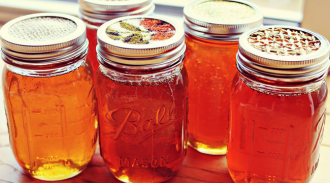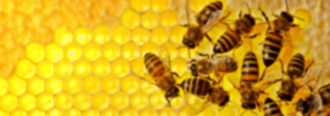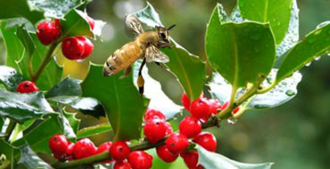
The Useful And Versatile Castor Bean Plant
By Connie Krochmal A number of oilseed crops happen to be good plants for bees, including the castor bean (Ricinus communis). Reportedly native to…
Read More
By Connie Krochmal A number of oilseed crops happen to be good plants for bees, including the castor bean (Ricinus communis). Reportedly native to…
Read More
By: Connie Krochmal Chicory (Cichorium intybus) is a common wayfarer that occurs over much of North America. The plant is most common in the…
Read More
By: Connie Krochmal This ancient group of plants dates to the Jurassic Age. Around 15 to 20 species are native to the New…
Read More
By: Elisabeth Doehring Deep into Gulf County an echo fills the trees and riverbank. A flash of black darts streak across the air. Bullseye! The…
Read More
By: Connie Krochmal Depending on the location, button bush can be a large shrub or small tree. lthough button bush (Cephalanthus occidentalis) may not…
Read More
By: Steven Payne Federal and state government programs in recent years have been announced and initiated to try to create better habitat and forage…
Read More
By: Connie Krochmal The Umbelliferae family is a treasure trove of pollinator plants. This group is named for the flower heads, which are typically umbrella-shaped….
Read More
Native to North and South America, huckleberries (Gaylussacia spp.) are most common in the East. Around eight species are found to the U.S. Typically…
Read More
By: Connie Krochmal This article will conclude the series on foraging book reviews. “Midwest Foraging-115 Wild and Flavorful Edibles from Burdock to Wild…
Read More
By: Janet Davis Some For You, Some For the Bees. Herbs have been grown for honey bee forage for millennia, ever since ancient Greeks…
Read More
By: Eugene Makovec Four years ago I moved bees from Kirkwood, Missouri – the heart of the St. Louis suburbs – to my new…
Read More
In this series thus far we’ve jumped hither and yon over much of the West. This month, we’ll focus on the Northwest. “Pacific Northwest…
Read More
By Christine Taylor It starts in the trees, densely covered with thousands of flowers give bees an eco-rich source of nectar and pollen. However,…
Read More
On Saturday, July 15th we’re holding our third Pollinator Day here at the Root Company’s Pollinator Meadow, behind our Corporate Headquarters. There’s a several…
Read More
By: Connie Krochmal For this month, let’s explore another volume in Timber Press’s foraging series. “Southwest Foraging-117 Wild and Flavorful Edibles from Barrel Cactus…
Read More
By: Janet Davis There’s something about shimmering blue flowers that fascinates gardeners – in fact some love them so much that they devote a…
Read More
By: Connie Krochmal This month we’ll take a look at another volume in the Timber Press series on foraging – “Mountain States Foraging – 115…
Read More
The Physics Of Pollination By: Marie Davey Pollination. The word brings to mind the droning buzz of fat yellow and black bumblebees bouncing from…
Read More
By: Kurt Knebusch and Paul Snyder Plant these for bees, and the holidays this year. Here’s seven hollies that can take it when…
Read More
Although beekeeping and foraging might appear to have little in common, it turns out that a large number of native or naturalized pollinator plants…
Read More